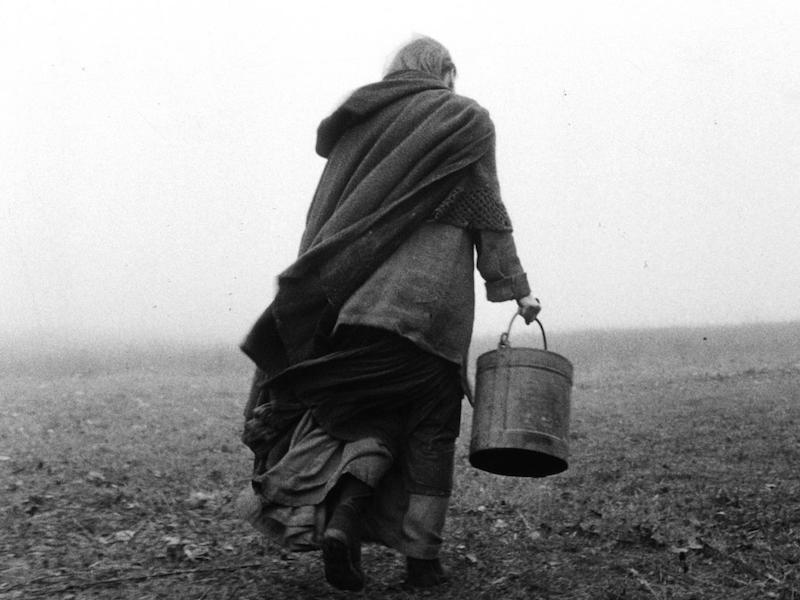Welcome to The Queue — your daily distraction of curated video content sourced from across the web. Today, we’re watching a video essay that explores what makes the filmmaker Béla Tarr so special.
I’m a huge proponent of tackling filmographies head-on. Make a list. Make a plan. Divide and conquer. Next thing you know, you’ve watched every single feature-length film directed by Danny DeVito. Yes, even 2003’s Duplex.
But some filmographies don’t go down as easily as others. They’re like daunting mountains, or endless swamps, or — in the case of Hungarian master Béla Tarr — decaying, apocalyptic horizons of rock, mud, and cobblestone.
Tarr’s feature length filmography is enticing for completionists because it is complete. Sort of. Tarr retired very publicly after the release of 2011’s The Turin Horse only to return with two non-fiction efforts: 2017’s Muhamed and 2019’s Missing People. But, for now at least, his narrative features are a complete circle of nine feature films
The barriers to entry are features, not bugs. Tarr’s thesis, or at least one of them, asks a lot of its viewers. Tarr’s films explicitly play with languid inertia, with banality, and tedium. His characters find themselves in the midst of decaying ruins, lifeless farmland, and in the shadow of bloated whale carcasses. Social realism lives alongside dreamlike expressionism. Patience is a must: some of his filmography stretches to upwards of 439 minutes.
It is, in short: not the most accessible filmography. And yet, Tarr was (and perhaps will be again if his so-called “retirement” continues) one of the most significant auteurs of world cinema. So whether you’re new to Tarr and need a push to finally watch his work or you’re a frequent flyer on the Neitzchian doom train, here’s a look at the Hungarian filmmaker’s work, what it means, and why it’s worth your time:
Watch “The Filmmaker at the End of the World”
Who made this?
This video on the cultural shadow cast by Hungarian filmmaker Béla Tarr was created by Luiza Liz Bond and Lewis Michael Bond, the duo behind The Cinema Cartography. Her videos investigate the intersections of film and philosophy. You can check out The Cinema Cartography’s website here. You can check out their back catalog of videos here.
More videos like this
- For another taste of The Cinema Cartography’s work, here’s their look at the aesthetics of evil in film.
- Here’s a video from The Cinema Cartography on Pier Paolo Pasolini‘s cinema of transgression. You may know Passolini for his notorious anti-fascist film Salò, or the 120 Days of Sodom. If you dare, the video essay is a fun and informative watch, especially for those only familiar with Salò.
- Finally, here’s The Movement Image with a video essay on the presence of Friedrich Nietzsche in Béla Tarr’s masterful The Turin Horse.

